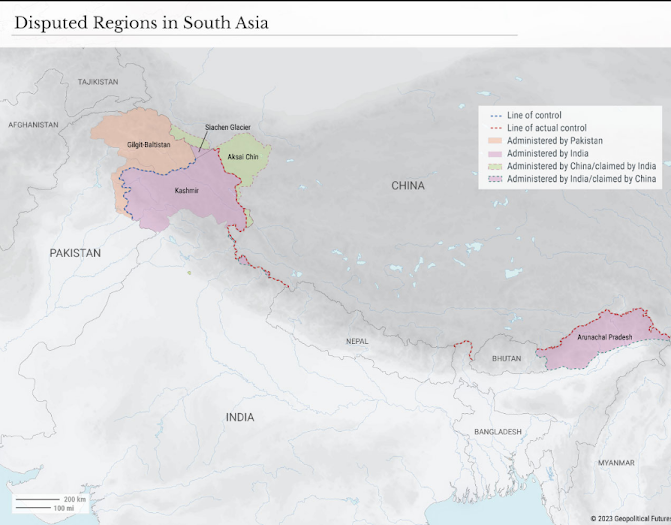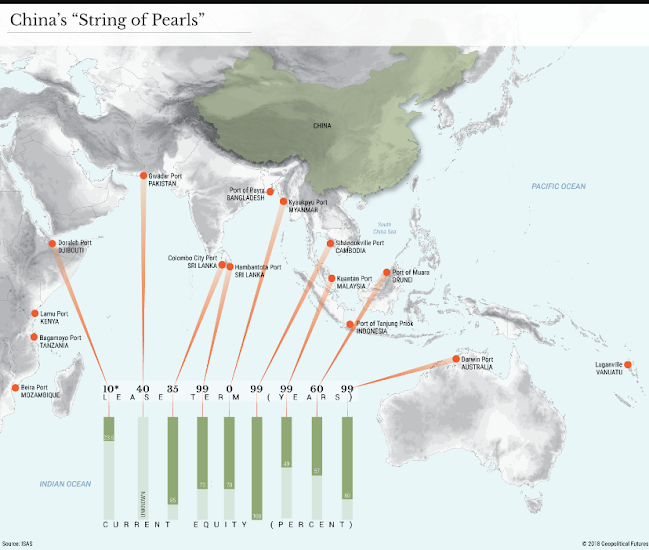The Limits of India’s Maritime Capabilities
China has found a way to stymie U.S. efforts to counter it.
By: Kamran Bokhari
Perhaps the most important dynamic to follow as the U.S.-China competition intensifies is U.S.-India cooperation.
Beijing certainly realizes as much and understands further that the linchpin for their cooperation will be the Indian Ocean.
China has been unable to project as much power there as it would like, so it is trying to divert India’s attention away from these waters to their shared border in the Himalayas, known as the Line of Actual Control.
This explains the growing militarization of this mountainous region.
It also explains why on Feb. 9 Indian External Affairs Minister Subrahmanyam Jaishankar said his country had accelerated connectivity projects with Nepal, Bhutan, Bangladesh and Myanmar.
His statements come just weeks before China’s foreign minister arrives in New Delhi for the G-20 foreign ministers meeting.
Meanwhile, according to a document circulated by the Indian government, the length of roads constructed in the “China-border areas” over the past eight years (totaling 4,229 miles or 6,800 kilometers) was nearly double the length of roads constructed in the preceding six years (2,243 miles).
The same document stated that 16 mountain passes were opened ahead of time and announced the start of a number of bridge and tunnel projects in the northeastern Indian state of Arunachal Pradesh, where a clash between Indian and Chinese troops took place in early December.
The latest clash, in the Tawang sector of Arunachal Pradesh, was the most significant hostile incident between China and India since June 2020.
The 2020 incident was triggered by Chinese forces making ingresses into Indian-claimed territory on the opposite end of their Himalayan frontier in the Galwan Valley in the Kashmir region.
Three years earlier, Indian and Chinese troops were involved in a standoff in the Doklam Valley in Bhutan that lasted for months.
Together, these incidents represent a systematic pattern of China trying to strategically poke India at multiple points along their poorly demarcated, 2,100-mile-long border.
By themselves, military moves across such a vast and harsh geography would make little sense.
The costs are high, and the payoffs low.
There’s a reason the border between China and India has been subject to a frozen conflict since 1962.
The only way China’s behavior makes sense is in the context of Washington’s strategy to counter China.
Central to that strategy is to ally with India.
To that end, the U.S. has actively engaged India on several diplomatic, economic, security and technological fronts, operating under the knowledge that the Indo-Pacific is the most important arena for cooperating vis-a-vis China.
It’s no coincidence that this courtship is taking place as India surpassed the United Kingdom last year as the world’s fifth-largest economy.
China, on the other hand, is facing strong social, economic and political headwinds. And its String of Pearls strategy in the Indian Ocean basin is stalling.
That Sri Lanka is in default, and that Pakistan is on the verge of one, is a clear indication that Beijing’s efforts to establish itself as the major player in the Indian Ocean basin are failing.
Of course, India has not paid much attention to the vast maritime space on its southern flank.
Its efforts to project influence in the Indian Ocean basin are still in their early phases, but it is an area in which New Delhi has begun to invest heavily.
The Indian navy’s budget has increased accordingly, accounting for 19 percent of the country’s overall defense budget, up from 14 percent last year.
Beijing needs a way to contain New Delhi in the Indian Ocean.
Its options are limited; the waters are basically India’s front yard, where China must expend considerably more resources to operate.
And the Strait of Malacca and the U.S. naval presence in the Western Pacific together make it difficult for the Chinese to access the region.
Hence the importance of the terrestrial border.
In response to Chinese military moves, India has been forced to enhance security across this wide geography, which is also very harsh terrain.
The Chinese enjoy the upper hand not just because of greater military capabilities but also because Beijing occupies large chunks of territory claimed by New Delhi.
The Indians are therefore required to expend a great deal of human and material resources in order to contain the Chinese in the Himalayas.
Complicating matters for India is the need to deploy a large number of forces on its eastern border with Pakistan.
Further aggravating this dynamic for India is that in the Kashmir region it faces a two-front theater with Pakistan and China, consuming a great deal of attention and bandwidth.
Consequently, New Delhi’s efforts to develop maritime capabilities in the Indian Ocean remain a secondary (if not tertiary) matter.
India’s inability to become a key maritime player means there are serious limits to how useful it can be to counter China.
Washington will have to continue to do the heavy lifting.
In this way, China has found a major chink in the armor of Washington’s Indo-Pacific strategy.



0 comments:
Publicar un comentario